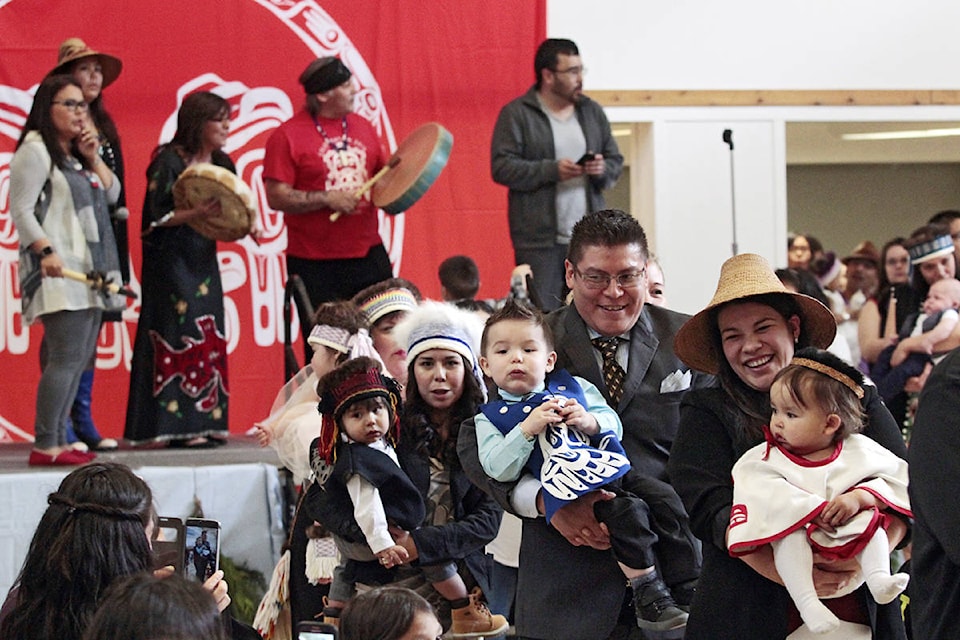Haida Gwaii’s population is growing older, but Skidegate and Old Massett remain islands of youth.
Data released by Statistics Canada last week show that of the seven villages on Haida Gwaii, only Skidegate and Old Massett had more children than elders when the 2016 census was done last May.
It won’t surprise anyone who saw all the proud parents at the baby welcoming feast on Saturday, but in Old Massett, children ages 14 and under made up 15.3 per cent of the population at census time — a higher share than the 10.8 per cent who were elders ages 65 and up.
Skidegate had an even higher share of youngsters, with 17.9 per cent children, and 12.5 per cent elders.
But overall, in 2016 Haida Gwaii followed the rest of Canada in moving to a scenario where there are more elders than children living on island.
Even in the two most youthful communities, the share of children declined over the last five years.
While census response rates were somewhat lower in 2011, Sandspit, Queen Charlotte, Port Clements, and Masset all appeared to have more kids than seniors that year. The reverse is true today.
Looking at everyone on Haida Gwaii, approximately 68 per cent of the population is what Stats Can defines as people of working-age: 15- to 64 years old.
That is less than it was five years ago, but still slightly higher than the share of working-age people across Canada.
Last year marked the first time in history that seniors outnumbered children in Canada, but B.C. crossed that threshold in 2011.
The switch is partly due to a sharp increase in baby boomers hitting retirement age, but also to a long-term decline in fertility rates — 1971 was the last year Canadians had enough children, on average, to replace the population without immigration.
While Canada’s ageing population does present challenges — fewer students, fewer taxpayers, higher healthcare costs — Ryan Berlin, a senior economist with the Rennie Group, said it’s important not to focus too much on boomers.
For one, Berlin said Canada already has more Generation X-ers than boomers — people born from the early 1960s to late 1970s.
For another, the fact most Canadians are living longer lives is an even bigger demographic shift than the post-war baby boom.
“Because we are living longer, we will always have more people in our older age groups than we had in the past,” he said.
